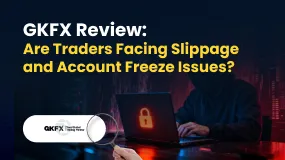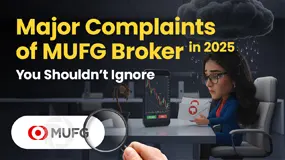简体中文
繁體中文
English
Pусский
日本語
ภาษาไทย
Tiếng Việt
Bahasa Indonesia
Español
हिन्दी
Filippiiniläinen
Français
Deutsch
Português
Türkçe
한국어
العربية
The impact of the Ukrainian war on rand volatility will last for months
Abstract:According to experts, the ongoing conflict in Ukraine will have a significant influence on the volatility of the rand in the coming months due to both military advancements and economic sanctions. Three potential outcomes were identified in PwC's South Africa Economic Outlook Updated Macro Scenarios for 2022-2023, which was published on Thursday.

According to experts, the ongoing conflict in Ukraine will have a significant influence on the volatility of the rand in the coming months due to both military advancements and economic sanctions.
Three potential outcomes were identified in PwC's South Africa Economic Outlook Updated Macro Scenarios for 2022-2023, which was published on Thursday.
The rand appreciated during the first quarter of 2022, rising from R16.00/$ at the beginning of the year to R14.40/$ at the end of March, according to the study. The rand was supported by a number of reasons, including less travel restrictions and looser lockdown regulations, a positive view for world economic development prior to Russia's invasion of Ukraine, and increased commodity prices as a result of the invasion's impact on supply chains.
During the second quarter, the rand had poorer trading, at times strengthening to above R16.00/$ in May and June. Risk-off attitude brought on by the aftermath of the Ukraine War, a significant increase in US interest rates favoring the dollar, and domestic economic difficulties like power shedding and floods in KwaZulu-Natal all put pressure on the rand.
The consequences of Russia's invasion of Ukraine are the main international factor influencing the current state of the world's financial markets. The two nations account for 70% of the world's sunflower exports, a third of the exports of potassium fertilizer, a quarter of the exports of wheat, and 12% of the exports of crude oil, according to the PwC analysis.
A fifth of the world's very rich chernozem (black) soil is found in Ukraine, which also exports enough food each year to feed 400 million people.
It is hardly unexpected that commodity prices have risen recently. The S&P GSCI Commodity Index, which includes 24 commodities from the energy, industrial metals, agricultural, livestock, and precious metals sectors, has increased by 65 percent in rand terms over the past 12 months. The prospect for the disruption in Central and Eastern Europe is therefore crucial to the outlook for the rand and financial markets, according to the experts.
The nations of the European Union (EU) and North Atlantic Treaty Organization (Nato) are not entangled in the conflict under PwC's base case scenario (which has a 50% likelihood). However, they continue to give Ukraine covert military help in the shape of information, defensive arms and ammunition, and other kinds of support. No more substantial measures are implemented, and the current sanctions against Russia are maintained. From a military standpoint, the Russian military advance virtually slows, and a potential stalemate might result in a protracted struggle.
The rand is predicted to average R15.50 to the dollar this year and R16.05 to the dollar in 2023 under this scenario, according to the analysts.
The forecast for EU and NATO engagement is the same in PwC's negative scenario, which has a 30% likelihood and is the second most likely scenario. However, based on the existing circumstances in the east of Ukraine, the Russian military offensive is still going strong. As a result, all of Russia's banks are disconnected from the SWIFT global payments messaging network and the nation is expelled from the World Trade Organization (WTO). The majority of the Russian natural gas that was being imported by the US and EU is stopped, and part of this demand is met by supplies from Saudi Arabia, the US, Qatar, and Azerbaijan.
In general, the situation has gotten worse since the present and looks to disrupt the world's commodities markets more severely and for a longer time. The price of oil, which at one point in early June reached $130 a barrel, might rise to $150. According to this scenario and its effects on the world's financial markets, we anticipate the rand to average R15.97 per dollar this year and R16.69 per dollar in 2023, according to PwC.
With a 20% chance, PwC's most optimistic scenario envisions a diplomatic resolution that greatly lessens the armed conflict in Ukraine and permits the resume of a sizable portion of the nation's soft commodity exports.
The analysts predicted that, given this scenario's favorable effects on international markets, the rand would average R15.04 per dollar this year and R15.41 per dollar in 2023.

Disclaimer:
The views in this article only represent the author's personal views, and do not constitute investment advice on this platform. This platform does not guarantee the accuracy, completeness and timeliness of the information in the article, and will not be liable for any loss caused by the use of or reliance on the information in the article.
Read more

Seacrest Markets Exposed: Are You Facing Payout Denials and Spread Issues with This Prop Firm?
Seacrest Markets has garnered wrath from traders owing to a variety of reasons, including payout denials for traders winning trading challenges, high slippage causing losses, the lack of response from the customer support official to address withdrawal issues, and more. Irritated by these trading inefficiencies, a lot of traders have given a negative review of Seacrest Markets prop firm. In this article, we have shared some of them. Take a look!

GKFX Review: Are Traders Facing Slippage and Account Freeze Issues?
Witnessing capital losses despite tall investment return assurances by GKFX officials? Do these officials sound too difficult for you to judge, whether they offer real or fake advice? Do you encounter slippage issues causing a profit reduction on the GKFX login? Is account freezing usual at GKFX? Does the United Kingdom-based forex broker prevent you from accessing withdrawals? You are not alone! In this GKFX review guide, we have shared the complaints. Take a look!

Is Seaprimecapitals Regulated? A Complete Look at Its Safety and How It Works
The straightforward answer to this important question is no. Seaprimecapitals works as a broker without proper regulation. This fact is the most important thing any trader needs to know, because it creates serious risks for your capital and how safely the company operates. While this broker offers some good features, like the popular MetaTrader 5 platform and a low starting deposit, these benefits cannot make up for the major risks that come from having no real financial supervision. This article will give you a detailed, fact-based look at Seaprimecapitals regulation, what the company claims to do, the services it provides, and the clear differences between official information and user reviews. Our purpose is to give you the information you need to make a smart decision about the risks and benefits of working with this company.

Major Complaints of MUFG Broker in 2025 You Shouldn’t Ignore
2025 is about to end, and if you still want to be a trader or investor and are looking for a broker to invest with. It is important to read real user complaints first. This will help you understand the kind of problems users are facing with MUFG broker. In this article, we will tell you about the major complaints users have reported about MUFG in 2025, so you know what to watch out for. Do not ignore this MUFG broker article and understand the problems.
WikiFX Broker
Latest News
Simulated Trading Competition Experience Sharing
WinproFx Regulation: A Complete Guide to Its Licensing and Safety for Traders
Interactive Brokers Expands Access to Taipei Exchange
Axi Review: A Data-Driven Analysis for Experienced Traders
INZO Regulation and Risk Assessment: A Data-Driven Analysis for Traders
Cleveland Fed's Hammack supports keeping rates around current 'barely restrictive' level
Delayed September report shows U.S. added 119,000 jobs, more than expected; unemployment rate at 4.4%
The CMIA Capital Partners Scam That Cost a Remisier Almost Half a Million
eToro Cash ISA Launch Shakes UK Savings Market
Is Seaprimecapitals Regulated? A Complete Look at Its Safety and How It Works
Currency Calculator



